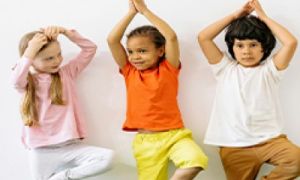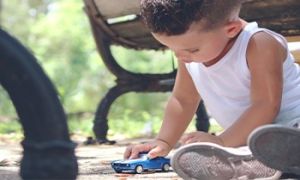Teaching preschoolers about nutrition can be both fun and educational. The following article provides information on Strategies For Teaching Preschoolers About Nutrition, Examples Of Explaining Nutrition To Preschoolers, Books Books About Nutrition For Children, Nutrition Songs For Children, Nutrition Printables and more.
Strategies For Teaching Preschoolers About Nutrition
1. Storytelling
-
Books: Read age-appropriate books about healthy eating, such as "The Very Hungry Caterpillar" by Eric Carle or "Eating the Alphabet" by Lois Ehlert.
-
Activity: After reading, discuss the different foods mentioned in the stories and their benefits.
2. Food Group Sorting
-
Activity: Use pictures or toy food items to help children sort foods into different groups like fruits, vegetables, proteins, grains, and dairy.
-
Skills Developed: Sorting, categorization, and understanding food groups.
3. Interactive Games
-
Activity: Create a "Healthy Food Bingo" game with pictures of various healthy foods.
-
Skills Developed: Recognition of healthy foods and interactive play.
4. Cooking Together
-
Activity: Involve preschoolers in simple cooking activities, like making a fruit salad or veggie sticks with dip.
-
Skills Developed: Fine motor skills, following instructions, and interest in healthy eating.
5. Garden Projects
-
Activity: Start a small garden or use containers to grow herbs, vegetables, or fruits.
-
Skills Developed: Understanding where food comes from, responsibility, and care for plants.
6. Food Art
-
Activity: Let children create artwork using real fruits and vegetables, such as potato stamps or fruit prints.
-
Skills Developed: Creativity, sensory exploration, and understanding different textures.
7. Songs and Rhymes
-
Activity: Teach children fun songs or rhymes about healthy eating. For example, "Apples and Bananas" is a popular choice.
-
Skills Developed: Language development, memory, and enjoyment of learning.
8. Healthy Eating Chart
-
Activity: Create a chart where children can place stickers or draw pictures of the healthy foods they eat each day.
-
Skills Developed: Tracking healthy habits, motivation, and positive reinforcement.
9. Taste Testing
-
Activity: Organize a taste-testing session with various fruits, vegetables, and healthy snacks. Encourage children to describe the tastes and textures.
-
Skills Developed: Sensory exploration, willingness to try new foods, and descriptive language.
10. Role-Playing
-
Activity: Set up a play kitchen or grocery store and let children role-play as chefs or shoppers choosing healthy foods.
-
Skills Developed: Imaginative play, social skills, and understanding food choices.
Examples Of Explaining Nutrition To Preschoolers
Here are some example explanations for teaching preschoolers about nutrition:
Example 1: Simple Explanation
"Fruits and vegetables help us grow big and strong. Eating different colors gives our bodies lots of good things to stay healthy, just like a rainbow makes us happy!"
Example 2: Using a Story
"Imagine your body is like a car. To make it go, you need to put in the right fuel. Healthy foods like fruits, vegetables, and whole grains are the best fuel to help you run, play, and have fun all day!"
Example 3: Relating to Favorite Characters
"Do you know how Superman is so strong? He eats lots of healthy foods that help him stay powerful. If we eat healthy foods, we can be strong like superheroes too!"
Example 4: Incorporating Fun Activities
"When we eat foods like apples, carrots, and yogurt, we get superpowers to jump, run, and play. Let's pretend we are superheroes and make a plate full of superfoods to give us energy!"
Example 5: Using Visual Aids
"Let's make a rainbow on our plate! We can choose red strawberries, orange carrots, yellow bananas, green broccoli, and blue blueberries. Each color helps our bodies in different ways and keeps us happy and healthy."
Example 6: Sensory Exploration
"Let's touch, smell, and taste these different foods. Look at how bright and colorful they are! When we eat a variety of foods, it's like going on a tasty adventure that makes our bodies strong."
Example 7: Relating to Everyday Experiences
"Remember how you felt tired after playing outside? Eating a healthy snack, like an apple or some nuts, can give you the energy to keep playing and having fun. Healthy foods are like little energy boosters!"
Books About Nutrition For Children
Here are some highly recommended books about healthy eating for children:
1. "N is for Nutrition" by Dr. Libby Weaver
-
This book takes children through the alphabet, highlighting different foods and nutrients. It's perfect for kids aged 4-8 years old.
2. "We Are What We Eat" by Kristy Hammil
-
This book uses talking and rhyming food characters to teach healthy concepts. It's great for kids aged 2-10 years old.
3. "Berenstain Bears and Too Much Junk Food" by Stan and Jan Berenstain
-
This classic story follows Papa, Brother, and Sister as they learn about the importance of nutritious foods and exercise.
4. "Eating the Alphabet" by Lois Ehlert
-
A picture book that introduces children to different fruits and vegetables through the alphabet. Ideal for kids aged 2-3 years old.
5. "The Fruits We Eat" by Gail Gibbons
-
This book provides information about different types of fruits, how they are grown, and their nutritional benefits.
6. "Nutrition Fun with Brocc and Roll" by 24 Carrot Press
-
An activity book that uses fun characters to teach nutrition concepts in an engaging way.
7. "The Very Hungry Caterpillar" by Eric Carle
-
A beloved classic that teaches children about healthy eating through the story of a caterpillar's transformation into a butterfly.
8. "The Food Group Friends" by Jennifer E. Morris
-
This book introduces children to the five food groups through friendly characters that help explain the importance of a balanced diet.
9. "My Body, My Life" by Jen Green
-
A book that explains how different foods help our bodies grow and stay healthy.
10. "The Good Food Book" by Sarah Almond Bushell
-
This book uses storytelling to teach children about healthy eating and making good food choices.
Nutrition Songs For Children
1. "Healthy Food Song" (Tune: "Twinkle, Twinkle, Little Star")
Fruits and veggies, grains and protein,
Dairy foods are all we're seeing.
Healthy foods to help us grow,
Eating right makes us glow!
Fruits and veggies, grains and protein,
Dairy foods are all we're seeing.
2. "The Food Group Song" (Tune: "The Wheels on the Bus")
The fruits in the bowl are good for you,
Good for you, good for you.
The fruits in the bowl are good for you,
All day long.
The veggies on the plate help you grow,
Help you grow, help you grow.
The veggies on the plate help you grow,
All day long.
The grains on the bread give you energy,
Energy, energy.
The grains on the bread give you energy,
All day long.
The protein in your meal builds your muscles,
Builds your muscles, builds your muscles.
The protein in your meal builds your muscles,
All day long.
The dairy in your cup makes your bones strong,
Bones strong, bones strong.
The dairy in your cup makes your bones strong,
All day long.
3. "Food Group Fun" (Tune: "Old MacDonald Had a Farm")
We eat food from different groups,
Healthy, tasty, too.
And in the fruit group, we have apples,
Yummy, yummy, yum.
With a crunch-crunch here and a crunch-crunch there,
Here a crunch, there a crunch,
Everywhere a crunch-crunch.
We eat food from different groups,
Healthy, tasty, too.
(Repeat with vegetables, grains, proteins, and dairy)
4. "Healthy Eating" (Tune: "If You're Happy and You Know It")
If you want to be healthy, eat your fruits,
If you want to be healthy, eat your fruits,
They give you lots of vitamins,
To make you strong and bright within,
If you want to be healthy, eat your fruits.
If you want to be strong, eat your veggies,
If you want to be strong, eat your veggies,
They give you lots of minerals,
To help you run and jump and twirl,
If you want to be strong, eat your veggies.
If you want to have energy, eat your grains,
If you want to have energy, eat your grains,
They give you carbs to fuel your day,
So you can run and laugh and play,
If you want to have energy, eat your grains.
If you want to build muscles, eat your protein,
If you want to build muscles, eat your protein,
It helps your body grow so tall,
And gives you strength to do it all,
If you want to build muscles, eat your protein.
If you want strong bones, drink your milk,
If you want strong bones, drink your milk,
It has calcium you need,
To help you run at super speed,
If you want strong bones, drink your milk.
These songs make learning about the food groups fun and interactive for preschoolers. Singing and moving to these tunes will help them remember the importance of each food group in a playful way.
Nutrition Printables
Build A Fruit Salad Cut And Paste
Build A Fruit Salad Cut and Paste enables children to cut out the pieces of fruit of their choice and create their own fruit salad. The Build A Fruit Salad Set helps children with their cutting skills as they cut out ingredients of their choice. This can also be laminated and pre-cut and used with playdough etc.
Fruit Bowl Matching
Fruit Bowl Matching enables children to match the correct fruit into the correct matching basket. Each basket has an image of a piece of fruit on it, using the fruit images, children cut out the fruit image and sorted it into the matching basket. This is a great game for children to sort and classify different pieces of fruit and learn to classify, sort and match them.
Fruit Cut And Glue Picture Match
Fruit Cut And Glue Picture Match enables children to cut out the colour fruit picture and glue them onto the corresponding picture. These can be pre-cut and laminated and childcare can use them to create a complete puzzle of each fruit.
Fruit Colouring Pages
These fruit colouring pages enable children to develop good pencil grip as they practice holding a pencil while colouring. Children also develop their hand-eye coordination and support children to concentrate and focus.
Fruit Inside and Out Flashcards
These flashcards include the inside and outside of fruits. This will help children identify the inside of a particular fruit and to match it with the correct outside of the same fruit. This will enable children to practice their visual skills and their ability to match corresponding fruits.
Fruit Matching Cut and Paste
This activity requires children to match halves of fruit together. By doing this activity children will develop their visual discrimination by choosing the correct half to match, hand-eye coordination, awareness of different fruits and cognitive development. These can also be cut and laminated for children to match.
Fruit Shadow Flashcards
These flashcards enable children to match each fruit with their shadow. Shadow matching enables children to develop visual discrimination skills and enables children to analyse the shapes of fruits to match to one another.
Vegetable Flashcards
Flashcards of vegetables, herbs and spices
Further Reading
Food and Nutrition For A Baby
Encouraging Parents To Pack Healthy Foods For Childcare


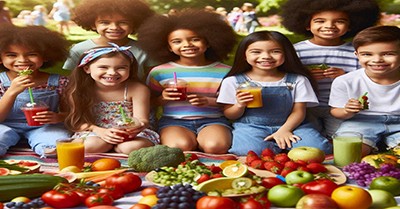
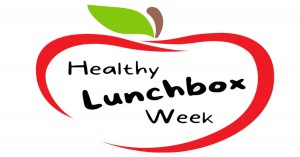
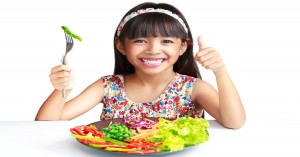
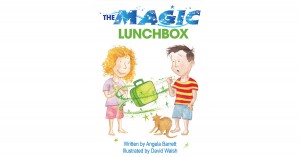
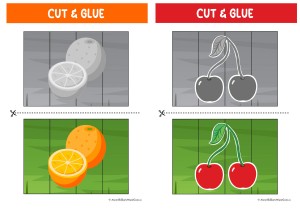
 Open ended questions cannot be responded to with one word answers such as yes or no. These types of questions enables a child to provide
Open ended questions cannot be responded to with one word answers such as yes or no. These types of questions enables a child to provide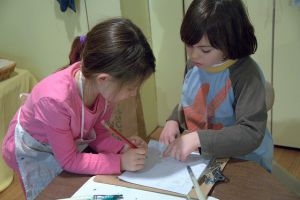 During your child’s preschool years, an important milestone begins to emerge. This is the development of pre-writing skills. Pre-writing skills are used to encourage, develop
During your child’s preschool years, an important milestone begins to emerge. This is the development of pre-writing skills. Pre-writing skills are used to encourage, develop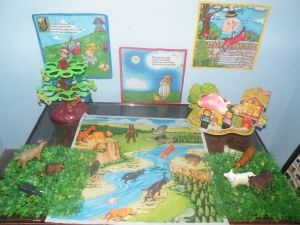 Open ended materials enables children to play freely. They are objects that have no rules to follow, use or function. Raw materials that can be
Open ended materials enables children to play freely. They are objects that have no rules to follow, use or function. Raw materials that can be An Acknowledgment of the Country is a way of showing respect for the Traditional Owners and can be given by both non-Indigenous people and Aboriginal
An Acknowledgment of the Country is a way of showing respect for the Traditional Owners and can be given by both non-Indigenous people and Aboriginal Language plays an important role in a child’s development. It enables a child to communicate effectively with their family, learn at school, socialize with friends,
Language plays an important role in a child’s development. It enables a child to communicate effectively with their family, learn at school, socialize with friends,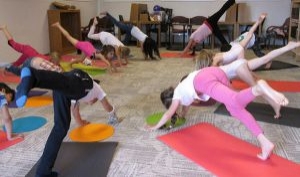 Like adults, children have to deal with their own stress in life. Moving house, starting a new school, preparing for a new sibling - these are
Like adults, children have to deal with their own stress in life. Moving house, starting a new school, preparing for a new sibling - these are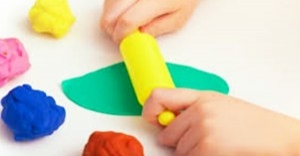 Playdough is such a versatile material. It provides numerous benefits to children as they manipulate it, it is safe and soothing and provides children with
Playdough is such a versatile material. It provides numerous benefits to children as they manipulate it, it is safe and soothing and provides children with Teaching children about sustainability enables them to appreciate and respect the natural environment. Early childhood services can provide meaningful hand on learning experiences in order
Teaching children about sustainability enables them to appreciate and respect the natural environment. Early childhood services can provide meaningful hand on learning experiences in order Recycling is an important concept that teaches children to care for the environment. It encourages children to be responsible and show a growing appreciating for
Recycling is an important concept that teaches children to care for the environment. It encourages children to be responsible and show a growing appreciating for When children apply paint to paper, glue things together, or pound a lump of clay, they experiment with colour, shape design and texture.
When children apply paint to paper, glue things together, or pound a lump of clay, they experiment with colour, shape design and texture.

